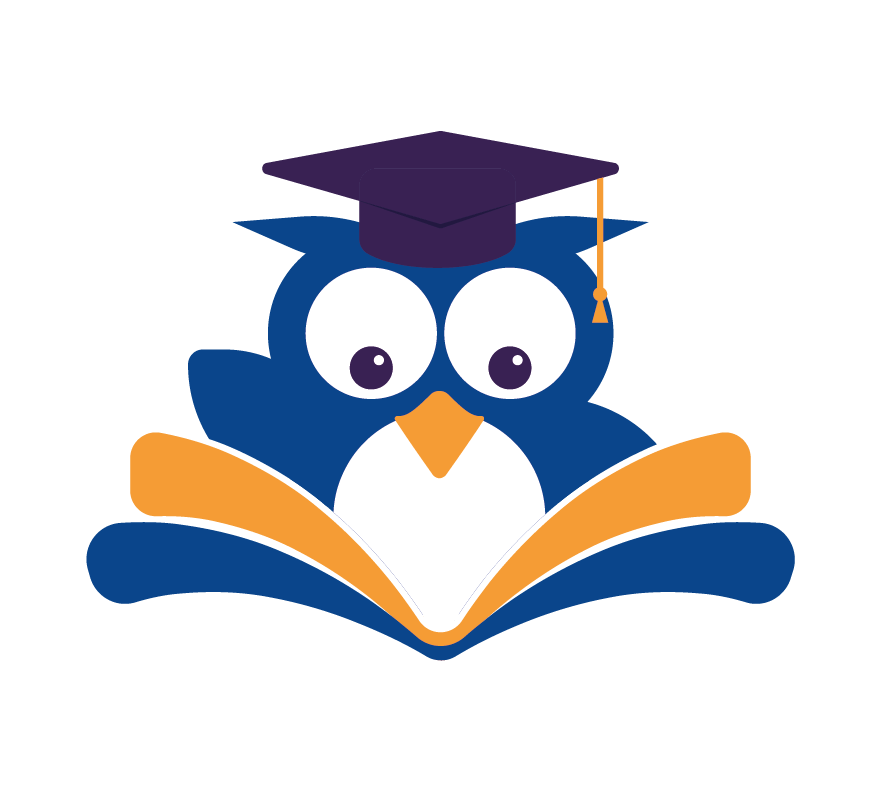In today’s fast world, being a lifelong learner is key for career success. We must stay curious, adaptable, and resilient to keep up.
Having a growth mindset lets us seek challenges, take feedback, and bounce back from setbacks. We’ll look into what it means to be a lifetime learner. We’ll also share ways to grow continuously.
By adopting this mindset, studying becomes fun. It helps us grow personally and stay ahead in a changing world.
Key Takeaways
- Understand the importance of being a lifelong learner in today’s fast-paced world.
- Discover the characteristics of continuous learners.
- Learn practical strategies for cultivating a growth mindset.
- Transform studying into an enjoyable experience.
- Drive personal growth through continuous education.
What It Means to Be a Lifetime Learner
Being a lifetime learner means always wanting to learn more. It’s about growing and improving every day. This helps you deal with the world’s changes.
The Defining Characteristics of Continuous Learners
Continuous learners have some key traits. Curiosity and a growth mindset are two of them.
Curiosity as a Core Trait
Curiosity makes people want to learn and explore. It’s what keeps you open to new things. This way, you can see the world in different ways.
Growth Mindset vs. Fixed Mindset
Carol Dweck says a growth mindset believes you can get better with effort. A fixed mindset thinks you can’t change. Having a growth mindset lets you see challenges as chances to grow.
Why Continuous Learning Is Essential in the 21st Century
In today’s world, learning never stops. Jobs and skills change fast. To keep up, you need to keep learning.
| Industry | Key Skills | Learning Resources |
|---|---|---|
| Marketing | Data Analysis, SEO | Online Courses, Industry Blogs |
| Technology | Coding, Cloud Computing | Coding Bootcamps, Tech Conferences |
| Healthcare | Medical Research, Patient Care | Medical Journals, Professional Workshops |
By always learning, you can stay ahead. This way, you keep growing and improving yourself.
The Science Behind Lifelong Learning
Exploring the science of lifelong learning shows how our brains can adapt and grow. This ability is vital in today’s fast world, where ongoing development keeps us relevant.
Neuroplasticity: Your Brain’s Capacity for Change
Our brains can change by making new connections, a process called neuroplasticity. This lets us learn new things and absorb information, even as we get older. It’s the base for never-ending knowledge acquisition and key for lifelong learning.
Cognitive Benefits of Continuous Education
Continuous education boosts our brains in many ways. It improves our memory and sharpens our critical thinking.
Memory Enhancement Through Learning
Learning new things strengthens our memory. Challenging our brains helps us remember and hold onto information better. This skill enhancement is crucial for personal growth and handling new situations.
Critical Thinking Development
Critical thinking is another big plus of lifelong learning. By exploring different subjects and challenges, we get better at analyzing and making informed decisions. This skill is vital in both our personal and professional lives.
Research-Backed Benefits for Aging and Longevity
Studies show that lifelong learning can make us healthier and live longer. Keeping our minds active may slow down cognitive decline with age. This shows how important lifelong learning is for staying healthy and vibrant.
In summary, the science of lifelong learning proves its worth in personal growth and well-being. By using neuroplasticity and continuous education, we can reach our full potential and live more satisfying lives.
Assessing Your Current Learning Mindset
Understanding your current learning mindset is the first step towards continuous education. It helps you see where you are and where you want to be.
Self-Evaluation: Where Are You on the Learning Spectrum?
Think about how you feel about learning. Do you get excited about new things, or do you feel scared? Knowing where you stand on the learning spectrum is important.
Identifying Personal Learning Blocks and Limitations
We all face barriers to learning. These can be fears or lack of time. Spotting these obstacles is the first step to breaking them down.
Discovering Your Optimal Learning Styles and Preferences
Knowing how you learn best is key. The VARK model shows four main learning styles:
- Visual
- Auditory
- Reading/Writing
- Kinesthetic
Visual, Auditory, Reading/Writing, and Kinesthetic Approaches
Some people learn best with pictures and videos. Others prefer listening or reading. It’s about finding what works best for you.
By knowing your learning style, you can learn more effectively. This makes your efforts pay off.
Developing the Core Habits of Lifetime Learners
Becoming a lifetime learner means building key habits for growth. These habits help us keep learning and improving. They are the base for ongoing development and skill enhancement.
Cultivating Intellectual Curiosity as Your Driving Force
Intellectual curiosity sparks our desire to learn. It opens us to new experiences and knowledge. Think about what interests you most. What questions do you have about the world?
Exploring these questions can deepen your curiosity. This curiosity drives your learning journey.
Embracing Failure as a Necessary Learning Tool
Failure is a part of learning. Instead of fearing it, see it as a chance to learn and grow. Embracing failure builds resilience and a growth mindset. These are key for a perpetual student.
Building Consistency in Your Learning Practice
Consistency is crucial for a successful learning practice. Create a routine and stick to it. This makes learning a daily habit.
Daily Learning Rituals That Compound Over Time
Daily rituals, like reading or practicing a new skill, greatly impact your learning. For example, consider these daily rituals:
| Ritual | Benefits | Example |
|---|---|---|
| Morning Reading | Improves comprehension, expands knowledge | Reading for 30 minutes each morning |
| Daily Practice | Enhances skill development, builds confidence | 30 minutes of language practice or coding exercises |
| Journaling | Fosters reflection, aids in memory retention | Writing down insights or reflections for 15 minutes |
The Power of Small, Consistent Steps
Small, consistent steps lead to big progress over time. Break down big goals into smaller tasks. This keeps you moving forward and motivated.
By adding these habits to your daily life, you become a true lifetime learner. You’re always looking to improve and expand your knowledge and skills.
Creating Your Personalized Learning System
Starting your journey to lifelong learning means creating a learning system that fits you. You need a schedule that works for you, a mix of deep and wide learning, and tools to stay organized. Tailoring your learning to your needs helps you stick with it and reach your goals.
Designing a Sustainable Learning Schedule
To make learning a habit, add it to your daily or weekly routine. Time-blocking is great for busy people. It lets you set aside specific times for learning, so it doesn’t get lost in other tasks.
Time-Blocking Techniques for Busy People
Time-blocking means setting fixed times for learning. Find when you’re most productive and schedule your learning then. For example, spend 30 minutes each morning on reading or listening to educational content.
Balancing Depth and Breadth in Knowledge Acquisition
A good learning system has both depth and breadth. Depth means diving deep into a subject, while breadth means exploring many topics. This mix keeps learning interesting and prevents burnout.
For instance, spend weeks deeply studying a subject, like a new language. Then, explore related topics or new areas of interest.
Digital and Physical Tools for Organized Learning
The right tools are key to your learning journey. Digital tools like apps and learning systems keep you organized. Physical tools, like planners and flashcards, offer a hands-on learning experience. Note-taking systems that help you remember are especially useful.
Note-Taking Systems That Enhance Retention
Good note-taking is essential for remembering what you learn. Try the Cornell Note-taking System or mind maps to review and recall information better. Find the method that works best for you.
By using these strategies, you’ll create a learning system that supports your lifelong learning goals. As
“The more you learn, the more you realize how much you don’t know.”
This mindset is at the heart of continuous education and self-improvement.
Practical Strategies for Continuous Skill Enhancement
Becoming a perpetual student starts with practical strategies. In today’s world, embracing continuous learning is key. It’s about growing and learning every day.
The 5-Hour Rule: Learning Like Successful Innovators
The 5-hour rule is a strategy used by innovators like Bill Gates and Elon Musk. It means setting aside five hours a week to learn new things. This helps in personal and professional growth.
Implementing the 5-Hour Rule:
- Set aside a specific time each day or week dedicated to learning.
- Choose topics or skills that align with your goals.
- Use a variety of resources such as books, online courses, and workshops.
Deliberate Practice Techniques for Faster Mastery
Deliberate practice is key for skill enhancement. It focuses on specific parts of a skill to master it.
Breaking Skills Into Manageable Components
To practice deliberately, break down complex skills into smaller parts. This makes it easier to improve one part at a time.
Feedback Loops for Rapid Improvement
Feedback is crucial in deliberate practice. Seek feedback from mentors, peers, or self-assessment to find areas for improvement.
“The key to improving is to recognize that we can always do better.”
Cross-Disciplinary Learning for Creative Problem-Solving
Cross-disciplinary learning explores different fields to solve problems creatively. It gives a deeper understanding of complex issues.
| Discipline | Skills Acquired | Application |
|---|---|---|
| Data Science | Data Analysis, Machine Learning | Business Intelligence, Research |
| Creative Writing | Storytelling, Content Creation | Marketing, Publishing |
| Psychology | Understanding Human Behavior | Counseling, UX Design |
By using these strategies daily, you can improve your skills and grow personally.

Overcoming Challenges on Your Lifetime Learner Journey
Your journey as a lifetime learner will face challenges, but these can be growth opportunities. As you keep learning, you’ll meet obstacles that test your will. But, by knowing these challenges and using smart strategies, you can keep moving forward and reach your learning goals.
Managing Information Overload in the Digital Age
In today’s digital world, we’re hit with info from everywhere. This can cause information overload, making it hard to know what’s important. To deal with this, it’s key to find ways to sort through the info.
Curation Strategies for Quality Learning
To find good learning content, try these tips:
- Find trusted sources and follow them.
- Use tools like RSS feeds or content aggregators to stay current.
- Focus on content that’s relevant and trustworthy.
Sustaining Motivation During Learning Plateaus
Learning plateaus are a normal part of learning. To keep motivated during these times, do the following:
- Celebrate your small victories.
- Change your learning methods to get past the block.
- Remember your self-improvement goals and why they matter.
Integrating Learning with Work and Family Responsibilities
It’s tough to balance learning with work and family duties. One good way to do this is by using small time slots wisely.
Learning in the Margins: Maximizing Small Time Blocks
| Time Block | Learning Activity |
|---|---|
| Commute | Listen to podcasts or audiobooks. |
| Breaks | Review notes or watch educational videos. |
| Evening | Dedicate 30 minutes to reading or journaling. |
By adding these strategies to your daily life, you can make ongoing development a lasting part of your routine. The secret to lifelong learning is not just finding big chunks of time. It’s about using every bit of time you have wisely.
Measuring Growth and Celebrating Progress
Tracking your growth as a learner shows how far you’ve come and where you’re going. This self-awareness is key to keeping up the pace of lifelong learning.
Effective Methods for Tracking Learning Achievements
To track your learning achievements well, think about keeping a learning journal or log. It can be digital or physical, based on what you like. Writing down what you’ve learned and how you’ve used it lets you see your progress.
- Set clear, measurable goals for each learning phase.
- Use a progress tracker app or spreadsheet to monitor your advancement.
- Celebrate milestones by reflecting on how far you’ve come.
Reflecting on Knowledge Application in Real Life
Thinking about how you use new knowledge in real life is key. This reflection closes the gap between learning and doing.
The Learning-Application Cycle
The learning-application cycle is ongoing. You learn new things and then use them in real life. This cycle strengthens your understanding and shows where you need more learning.
| Learning Phase | Application Phase | Outcome |
|---|---|---|
| Acquire new knowledge | Apply knowledge in real-life scenarios | Reinforced understanding |
| Identify areas for improvement | Refine skills through practice | Enhanced proficiency |
Setting New Learning Horizons and Challenges
As you move forward, it’s vital to set new learning goals and challenges. This keeps you growing and prevents you from stopping.

By always pushing yourself and expanding your knowledge, you become a true perpetual student. You’re always looking for new knowledge and experiences.
Conclusion: Embracing the Perpetual Student Mindset
As we finish our exploration of lifelong learning, we encourage you to become a perpetual student. This means always wanting to learn more and grow. Stay curious and open to new experiences and challenges.
By using the strategies and habits from this guide, you’ll start to see yourself as a lifelong learner. You’ll value continuous education and self-improvement. This will make your life more fulfilling and adaptable.
Remember, learning is a journey, not a finish line. Keep yourself motivated, track your progress, and celebrate your wins. This way, you’ll live the life of a lifelong learner. You’ll enjoy a lifelong love of learning and a mindset that grows with you.

